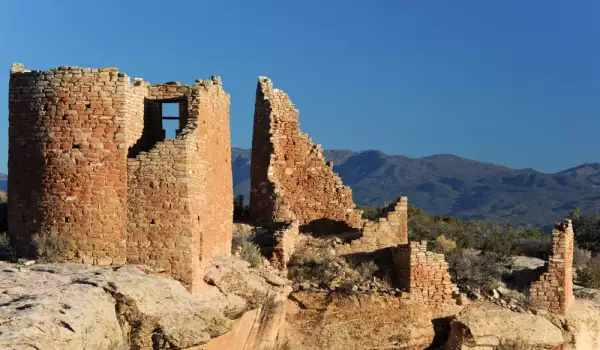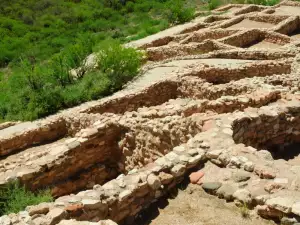Hovenweep National Monument

Hovenweep National Monument is located near the end of Bluff, Utah. It was declared a national monument in 1923 by President Warren Harding.
Hovenweep National Monument consists of six areas where there are ruins of local Indians. Four of them are located in Colorado - Holly Canyon, Hackberry Canyon, Cutthroat Castle and Goodman Point. In Utah, there are Square Tower and Cajon.
The first people who came from Europe, saw the ruins in 1854. Then the expedition was of the first Mormons who, after local Indians learned of the existence of these ancient ruins. Hovenweep’s name comes from the name given in the language of the Ute tribe, in which it means "valley of desolation." This name was adopted and popularized by the phonograph William Henry Jackson, in 1874.
Unfortunately, the ruins were largely destroyed and looted in the early twentieth century, when hunters break down the walls, to look for valuable artifacts. They dug the floors of the rooms up and discovered the remains of the deceased Indians who were buried there.
Vandals have left few of the tombs untouched. Farmers, hunters and hikers dug undisturbed and managed to bring a huge amount of ancient bodies, most of them breaking even as they landed on the ground. They scattered the bones of buried Indians everywhere. Ethnologist Walter Fewkes posted an archaeological survey, which expressed his opinion - that the ruins are valuable and should be preserved at any cost from treasure hunters.
Residents of Hovenweep National Monument in ancient times were able to build beautiful towers that rise on the edge of the canyon, which proved amazing art of the current them.

The area was inhabited by people more ten thousand years ago. Then paleo- Indian settlers arrived here to seek fruits, roots and animals. This region was inhabited by paleo- Indians for centuries.
Around 900-year BC people here started dealing mainly with cattle and agriculture. At the end of the eleventh century Hovenweep was inhabited by over two thousand five hundred people. They changed the terrain of terraced hills to plant the plants and to gain greater yields. Below the canyon, they collected their yields, which remained intact for a long time – including corn and beans, which can be used at a later stage.
Most of the buildings in Hovenweep were built in the eleventh and twelfth centuries. At that time people here built square and cylindrical towers, as well as many cave dwellings and cave rooms for ceremonies and important meetings. According to some specialists, the Hovenweep towers served either as observatories or defense facilities.
Some archaeologists believe that the towers were used for living quarters. At the end of the thirteenth century the inhabitants of Hovenweep left. They headed to the Rio Grande Valley in New Mexico.















